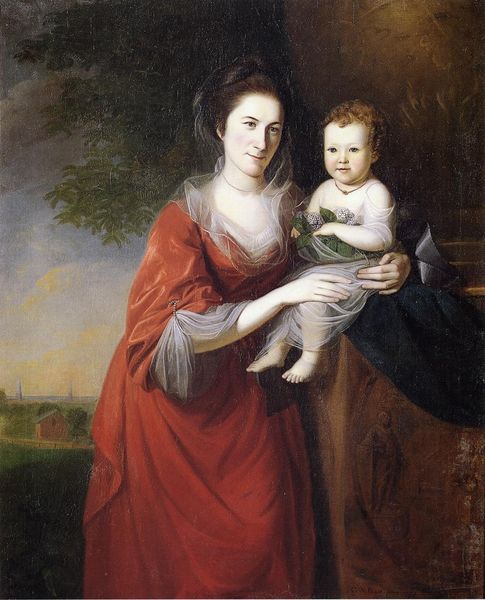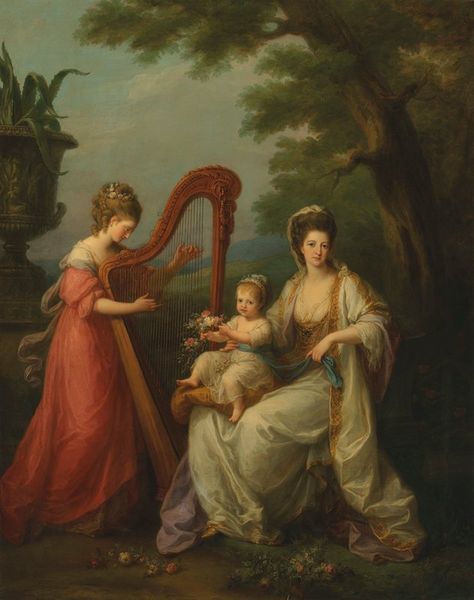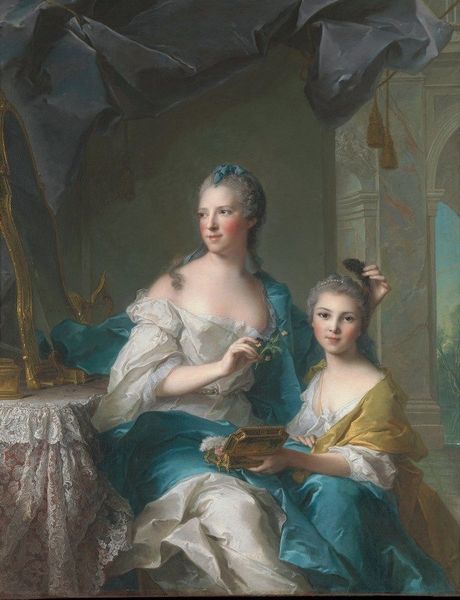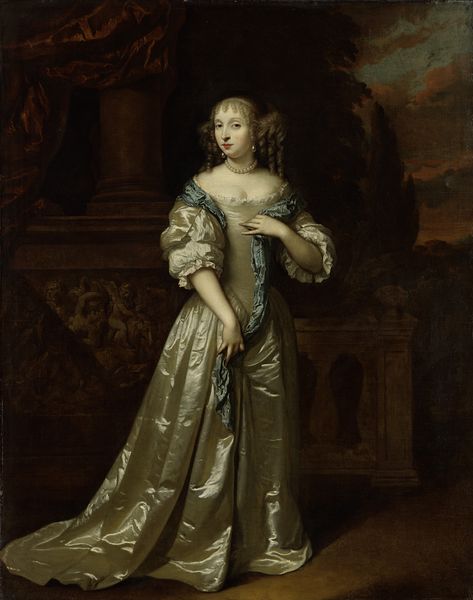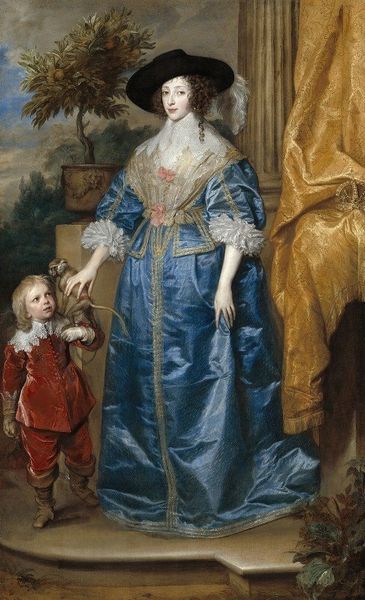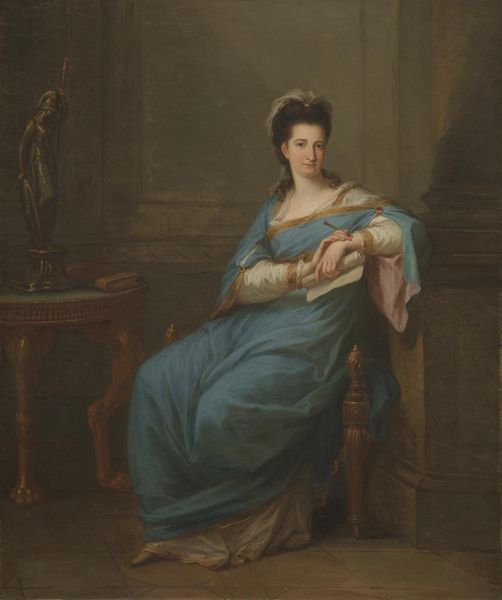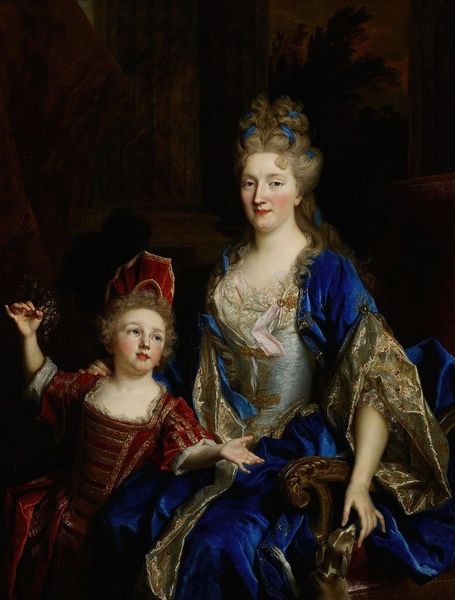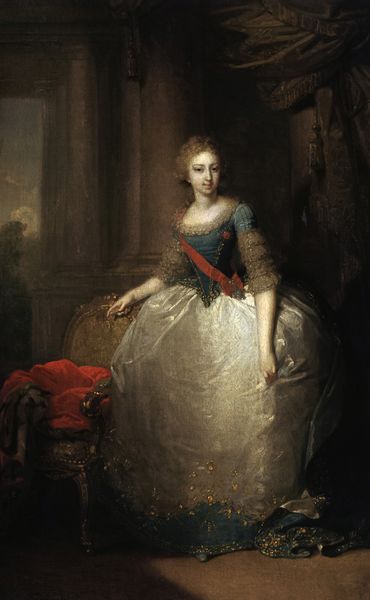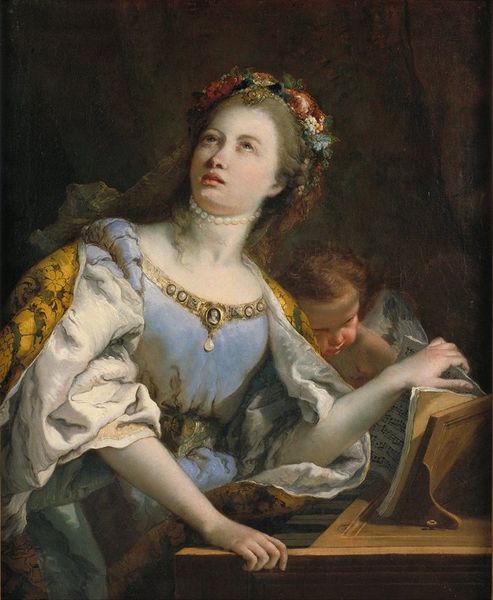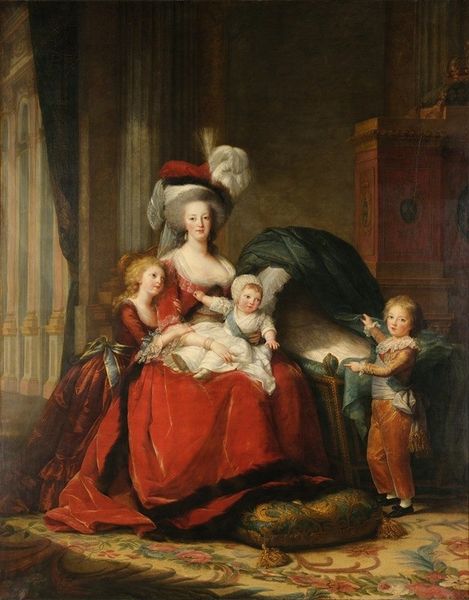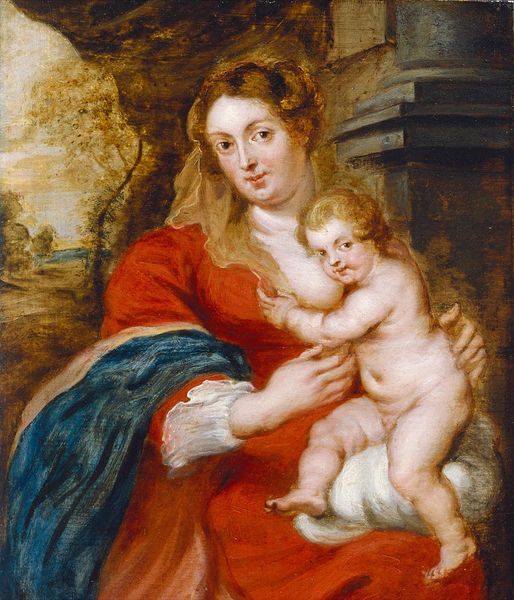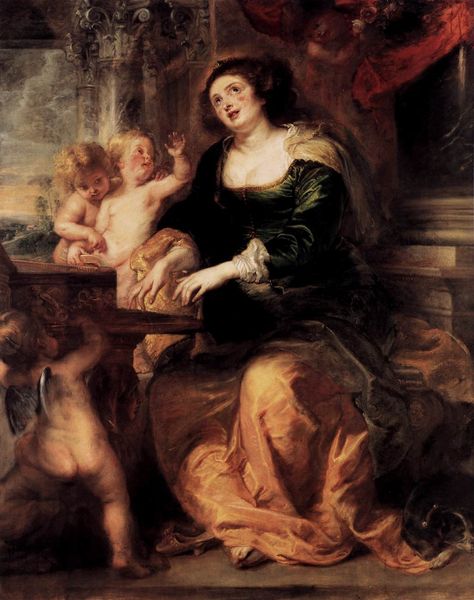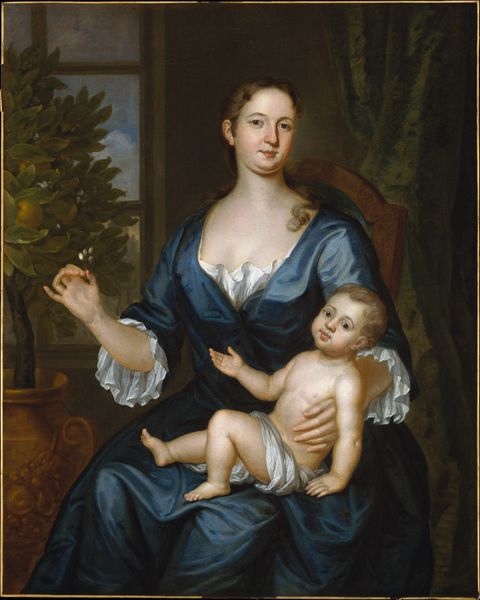
Portrait of Augusta of Hanover with her first born son Karl Georg of Brunswick 1767
0:00
0:00
angelicakauffmann
Royal Collection (Buckingham Palace), London, UK
Copyright: Public domain
Curator: This is Angelica Kauffmann's "Portrait of Augusta of Hanover with her firstborn son Karl Georg of Brunswick," painted in 1767. Kauffmann was quite sought after for portraits of European royalty and nobility. Editor: The first thing that strikes me is its theatricality. It’s like a scene pulled straight from a grand opera. The drapery, the vase… everything points toward high drama, don’t you think? Curator: Absolutely. The staging is deliberate. Note the columns, the suggestion of a landscape in the distance. The artist certainly intends to create an allegorical atmosphere here. We have classical virtue coupled with regal bearing. Augusta is portrayed almost as a goddess. Editor: And she’s wearing, what looks like, a miniature crown or tiara? Is this to emphasize the idea of queenship from birth, literally a birthright? It makes you wonder about the pressures, doesn't it? That kid is adorable, by the way. Perfectly cherubic. Curator: Indeed, it’s more than mere regal status that Kauffmann is presenting us with. The crown might signify sovereignty, of course, but within the visual language of the time, it also could represent Augusta as a personification of a noble ideal of motherhood—a Madonna-like image for the Enlightenment age. Consider that sword and armor in the background, barely visible. That brings the element of protecting dynasty at all costs. Editor: A Madonna… that's it! There’s this serene untouchability, despite holding a baby, very formal for an intimate mother-child moment. What would the Royal family in England, where this artwork currently is held, think about a German aristocrat resembling this level of sainthood? Curator: The Royal Collection seems to value a broad range of portrayals from across different royal houses, and rightly so. The Rococo style lent itself to conveying dignity and grace, while also making it clear through symbolic choices that one represents certain noble or ethical values. Editor: Looking at the tender way Augusta holds Karl Georg... maybe Kauffmann intended to convey the personal sacrifices too. Giving up a "normal" life for dynasty's expectations sounds intense. Curator: A potent mix of statecraft and personal touch indeed. Editor: This was unexpectedly insightful. Angelica made me rethink the relationship between personal feelings and the weight of representing legacy in the arts.
Comments
No comments
Be the first to comment and join the conversation on the ultimate creative platform.
